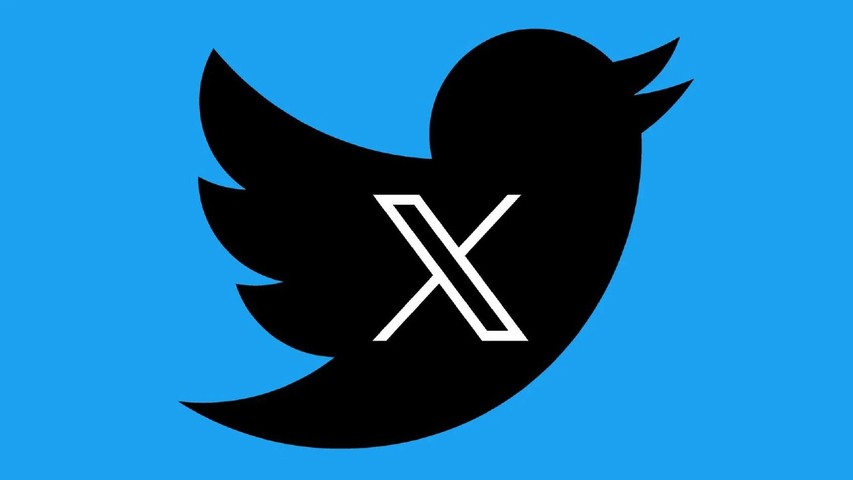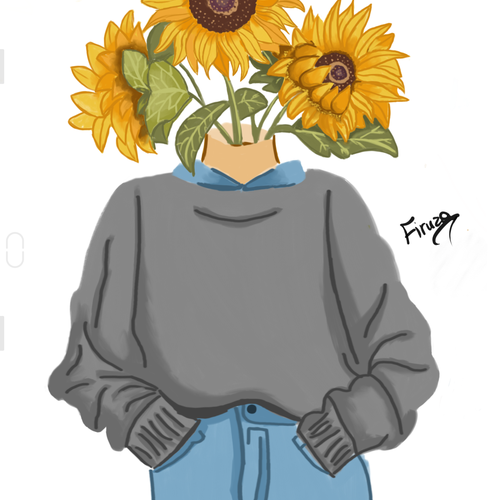Is X (Twitter) Obsession Real?
Firuza Haydarova

Even though I am a part of iGen, the Internet Generation, I am not very into using social media. I do not have accounts on Instagram, TikTok, Facebook and so forth. However, in late November, X (formerly known as Twitter) has drawn my attention. Little did I know about X, it was mainly for written communication, people type and read, and comment their thoughts, they discuss a certain topic in a crowd with lots of people. I downloaded the app on my phone, created an account and have been using it ever since. I began posting and narrating my life to the public. I got used to posting everything in my mind that seemed interesting to me. In a very short period of time, I got a pretty decent audience. People began replying, retweeting, and most importantly liking my posts..
At first, it felt like it was a healthy relationship with a social medium. By saying that, I mean, that it is a written medium, from time to time people write about crucial topics, or useful threads, or actively use it as a professional account. In reality, is it really healthy?! Although many people post about important matters, most X users, including me, share so many things from their personal lives with others, that they could be appropriate, interesting, funny or perhaps, educational. But it is still considered a private matter, and in the end, this can lead to a lack of privacy. Because people become obsessed with sharing everything related to their own lives. When it comes to the group discussions in the application, this can show the true image of hatred humankind possesses that I have never imagined it exists that much. Although X’s toxicity level is an increasing trend, and people are losing their privacy unconsciously, why are they so obsessed with using it, and how can it negatively impact its daily users?
Paul Daley (2023) is an Australian columnist, journalist and essayist. In his article, “I quit Facebook and Twitter cold turkey - and I barely know myself,” published by The Guardian in 2023, he discussed his journey with Twitter and Facebook and explained why he was addicted to using these social media and the detrimental effects to his attention span. He commences his article by reasoning why he stopped using Facebook, “The thing that perhaps I hated most was the capacity - no, the encouragement! - the platform gave people to confect and cultivate parallel, false lives. The perfect marriages. The beautiful, oh-so thoughtfully, eclectically curated homes with ocean - or bucolic bush-outlooks. The perfectly adjusted children with their prodigious A+ results” (Daley, 2023, p. 1). The idea of false lives which has a strong connection with encouragement that Paul Daley argues about is the first reason for obsession. As I mentioned above, not only Facebook, but X users also share their experiences all the time. After sharing some, they begin tasting the “sweetness” of it. They get their encouragement by likes, comments, new followers or by any kind of reaction. Following that, they just want to show off their “perfect lives” - the lives which have so much burden on them that we cannot imagine they have. It is a widely-known fact that life is not a perfect place to live in, there could be challenges, many failures, burdens, traumas, as well as there could be happiness, bright mornings, sunny days, success. Sharing the bright side of your life, even though there are lots of challenges behind it, can make people “blind” who think that there do exist the “perfect life” thing in the world where human existence is a very complex reality.
The author continues his argument with Twitter (or X) by explaining how addicted he became with this platform. Checking it whenever he picks up his phone or computer became a compulsive obsession. He describes the medium as necessary, fundamental and irreplaceable like an addiction, and elucidates his condition at that time, “I became ever more compelled (and concerned about and disturbed) by those whose sometimes over-sharing, piece-by-piece narratives - often about mental and physical health and personal calamity and just everyday life drama and mundanity - seemed to cry for help or real-life support and understanding”, (Daley, 2023, p. 2). As I mentioned at the beginning, the encouragement leads to using the medium more and more, and picking up, using it more, writing, sharing more, discussing unnecessary topics more, which is the process of unhealthy and addictive relationships with social media. He was living his own life and yet because of this app he became concerned and mostly disturbed by the ever-lasting drama in others lives. His burden started weighing double unnecessarily.
With this regard, Judson Brewer (2019) MD, Ph.D., who is an addiction psychiatrist, neuroscientist and New York Times best-selling author for Unwinding Anxiety, explained how obsession occurs in the brain like it did in Daley’s. In his article for Psychology Today, “Addicted to Twitter? Here’s Why,” the Director of Research and Innovation at the Mindfulness Center and associate professor in psychiatry at the School of Medicine at Brown University, Dr. Brewer elucidates how Twitter (X) hacks the brain from a psychological perspective. This reward-based process includes three main aspects: trigger, behavior and reward which causes a dopamine rush. This means that the more we tweet, the more we spend time on this platform, the more a new behavior gets reinforced which leads to an obsession (Brewer, 2019, p. 1). In this case, with the triggered action, we give immediate response to get either self-righteous vindication or approval by likes or comments. After that, this stimulation and reinforcement cycle can give us dopamine release which again leads us to do more actions like this. This is the exact reason why Paul Daley became addicted to this platform. When he posted, he got a number of likes and his brain released a dopamine rush which again triggered him to use this app more and more. When he shed light on the disadvantageous side of Twitter, he states, “The harmful side of Twitter comes in the same form. We feel angry at someone’s tweet, our brain screams "do something!" and we instantly send a rage-filled tweet @ that person” (Brewer, 2019, p. 2). After tweeting to that person with unnecessary hatred, these responses get others’ attention and they can like it, further reply to it, and send approvals like “Yeah, you got that guy”, and the user himself gets self-righteous vindication like “Yeah, I got that guy!”. Additional dopamine release occurs here (Brewer, 2019, p.2).With this satisfaction, tweets can create conflicts, because we just provide people with immediate responses without much thinking about it mindfully. This quote indicates the need for some mindfulness, reflection, and some pause before responding to social media communication in order to avoid long-lasting negative situations and conflicts. In social media, we cannot see the immediate outcomes of our actions or posts. When we meet up in person, by their body language and the voice tones, we can witness the results of our sentences or actions toward the people. Because of that, we can easily determine their emotional state after our action whether they are hurt or not (Brewer, 2019, p.2). In social media, especially in written media like X (Twitter), we less understand each other, make more conflicts, and have false approval due to the inability to see the person’s emotions and body language.
With those conflicts and false lives that Daley and Dr. Brewer talk about, in mind, an American journalist, New York Times columnist and political analyst, Ezra Klein (2022) demonstrates his experiences with social media and makes comparisons of his life with and without it, and he also argues about its negative effects by quoting and giving examples and explanations from people who are credible for the matter he talks about in his article, “I Didn’t Want It to Be True, but the Medium Really Is the Message”. He analyzes the impacts of television, internet, a number of social media platforms like Instagram, Twitter, Facebook, and some podcasts such as 6-minute English. He reasons his idea of the fact that attention is contagious (Klein, 2022, p. 6) by quoting Jenny Odell (2019), a visual artist, and the author of How to Do Nothing: Resisting the Attention Economy, ““One thing I have learned about attention is that certain forms of it are contagious. When you spend enough time with someone who pays close attention to something, you inevitably start to pay attention to some of the same things. …what we choose to notice and what we do not - are how we render reality for ourselves”” (Odell, 2019). In X, even though you choose your audience, people you want to follow, there is a section called “For You” at the top of the platform where you can read people who you do not even follow or know, it is like a recommendation page. As most X users spend their time on this page, they unconsciously pay attention to anything that’s going on in the X community. Personally, I only read pages of the Uzbek community, the audience that I relate most to. Whenever there is a conflict between two people or more, I can see, read, and may react to them (but I mostly choose not to). I am paying attention to them, I am being concerned about their topics unconsciously because I am constantly exposed to these matters or conflicts. If people I follow pay attention and react to those kinds of tweets, I will soon be exposed to them, too. This is how Twitter works: you mind some tweets, your audience begin minding them, your following people mind those tweets, you mind them. There is no such thing as “mind your own business”, people always discuss something that they encounter on their way in X. Therefore, people read more, react more, have more dopamine rush, have more vindications and approvals, more conflicts. Eventually, the obsessive chain becomes never-ending.
In conclusion, X is the platform that is surely addictive due to its continuous, discussive chain that includes numerous conflicts, false lives, oversharing privacy and its dopamine rush which can be gained by a number of responses to one’s post. The fact that it has a written culture and users are only able to write their thoughts in just 280 characters, the conflicts between people can easily begin as this social medium shows only the dry words, but does not show the emotions and facial expressions or body language. By writing this essay, I do not encourage that we should not use X or any kind of social media which can be obsessive. Inspite of the fact that Twitter can be used as a professional account or has a number useful posts, it is undoubtedly obsessive and the algorithm it has makes people pay attention to the matter as a crowd, discuss every kind of topic together and respond to them in a limited number of characters, and leaves multiple rooms to lack of understanding other people which will result in unnecessary conflicts and misunderstandings. But being mindful of our actions, using it in an effective way to expand our networking or run a business, thinking twice before spreading our immediate responses can eliminate the obsessive behavior of this platform.
References:
Brewer, J. (2019, February 6). Addicted to twitter? here’s why. Psychology Today. https://www.psychologytoday.com/us/blog/the-craving-mind/201902/addicted-twitter-heres-why
Daley, P. (2023, September 17). I quit Facebook and Twitter cold turkey – and I barely know myself. The Guardian. https://www.theguardian.com/commentisfree/2023/sep/18/social-media-addiction-quit-facebook-twitter
Klein, E. (2022, August 7). I didn’t want it to be true, but the medium really is the message. The New York Times. https://www.nytimes.com/2022/08/07/opinion/media-message-twitter-instagram.html
Odell, J. (2019). How to do nothing resisting the attention economy. Melville House Publishing.

Comments